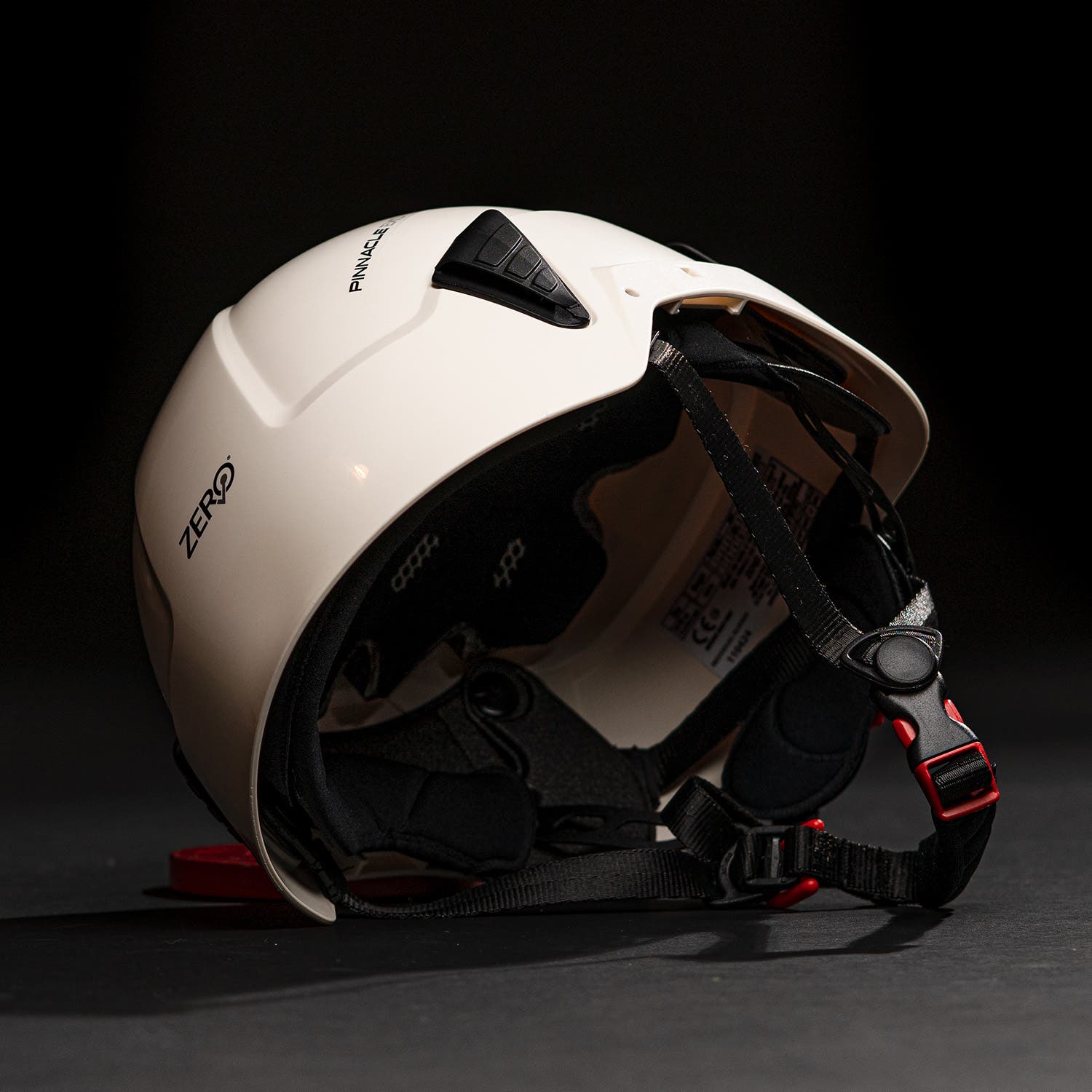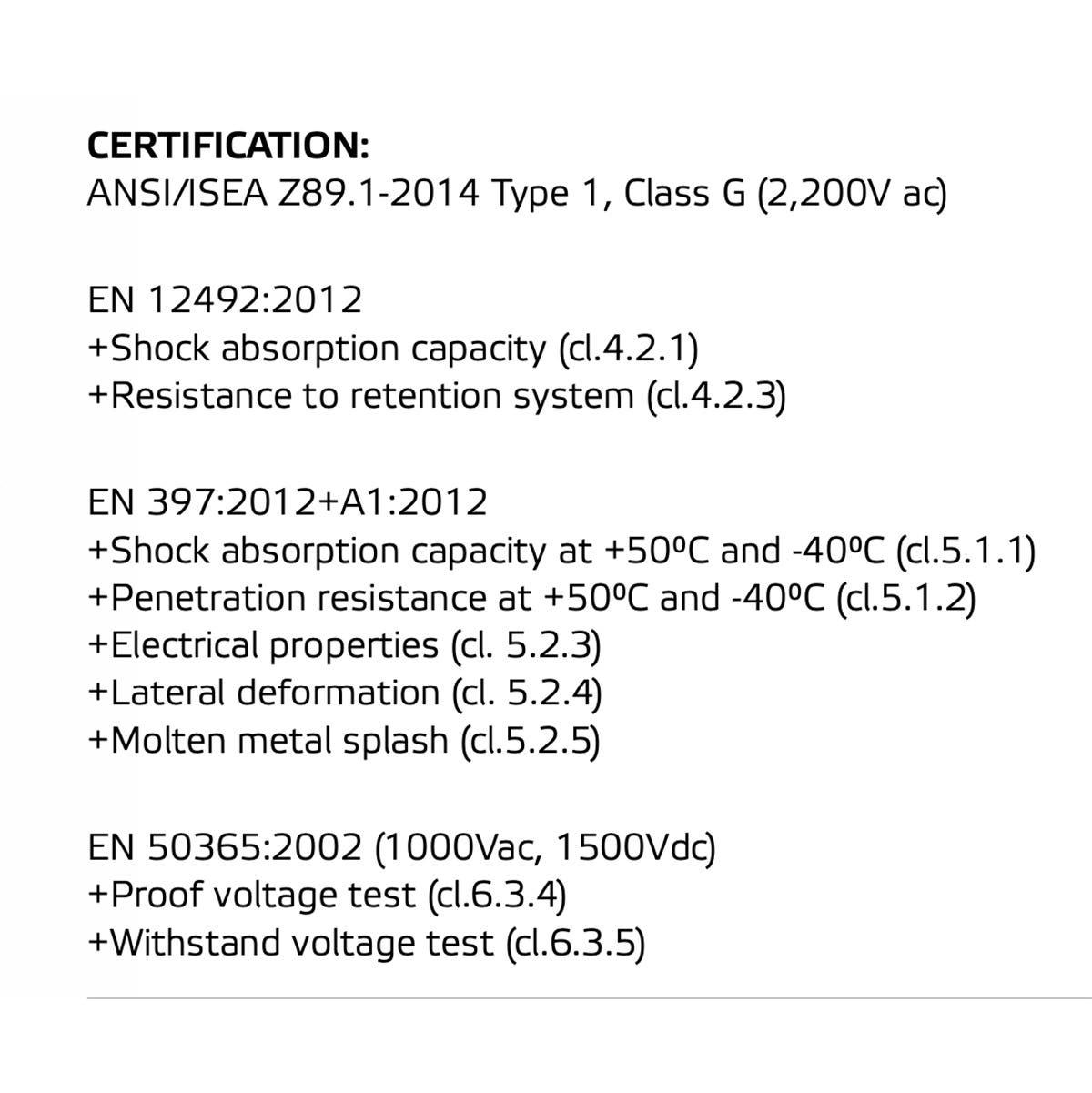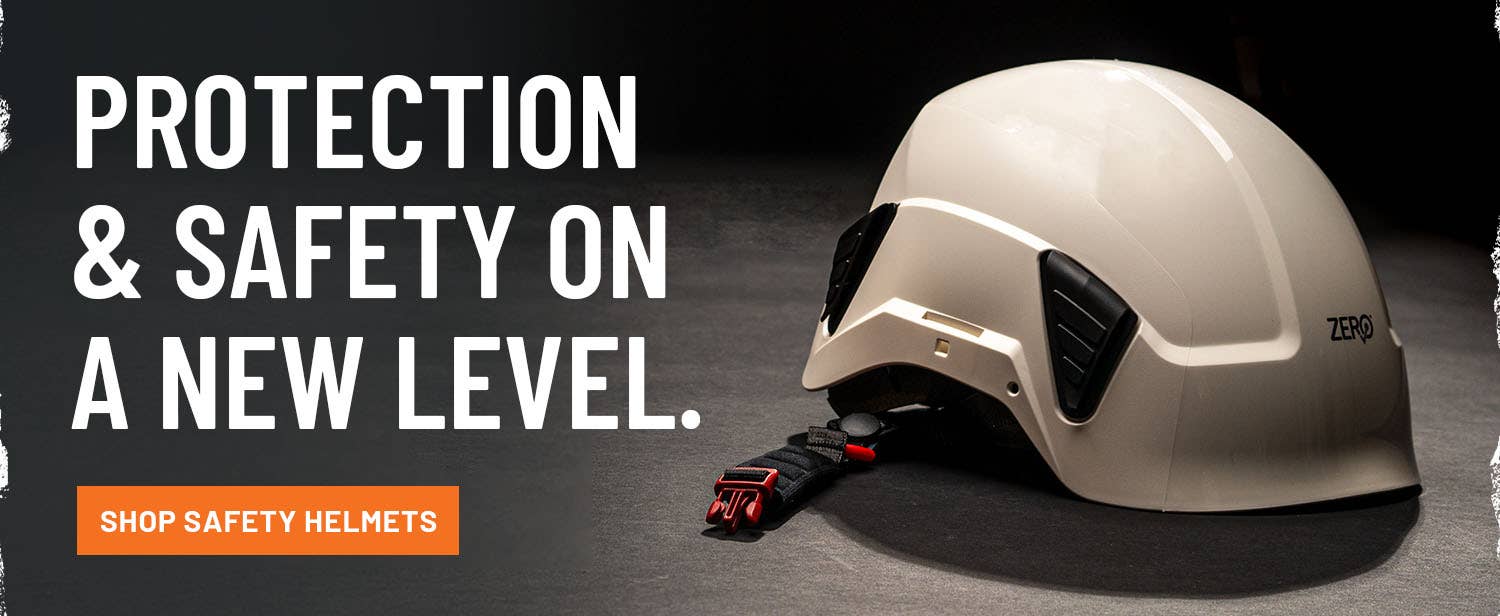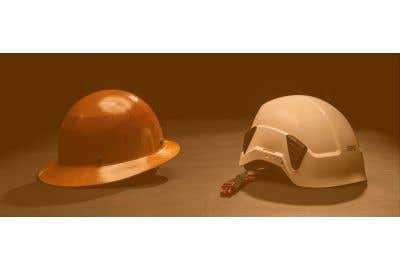*Disclaimer*
The information contained on this page is for promotional and informational purposes only. All equipment should be used by trained professional tradesmen who have been trained how to use the equipment described on this page, and understand the risks of their work. PowerPak assumes no responsibility for errors or omissions in the use or misuse of any product purchased. In no event shall PowerPak be liable for any direct, special, indirect, consequential, or incidental damages or any damages whatsoever, whether in an action of contract, negligence or other torts, arising out of or in connection with the use of this information or the contents of this page. PowerPak reserves the right to make additions, deletions, or modifications to the contents on this page at any time without prior notice.
Table of Contents
We are seeing it. It is starting to happen. More and more companies are switching from traditional hard hats to safety helmets. But why? What’s the difference between hard hats and safety helmets? Both options follow the same ANSI and EN standards, and safety helmets cost more on average.
So, why would anyone buy a safety helmet over a traditional hard hat? Well, it's because they are safer. Even though they are rated the same, the helmets have safety features that are hard to ignore, and there is one feature in particular that makes all the difference.
Let's dive in.
What are Safety Helmets?
First, the idea of wearing a strapped helmet is not a new concept. Workers who are exposed to heights or fall hazards always wear helmets instead of hard hats. The shift of the ground crew switching away from hard hats is the topic of discussion.
Most people assume manufacturers attached some chinstraps onto some hard hats and rebranded them as safety helmets. That’s not the case.
These helmets are repurposed climbing helmets. In fact, you'll hear many workers and companies will use the term climbing helmet and safety helmet interchangeably.


This doesn't mean you should buy a climbing helmet from an outdoor recreation store and use it on a work site. Climbing helmets have excellent impact protection, but they are not tested to meet the specific ANSI or EN ratings required for worksites, which we will cover later.
Also, compared to hard hats, safety helmets/climbing helmets sit lower on the head, and the harness secures lower on the back of the head, creating a more secure and comfortable fit.
And, of course, the feature that really sets safety helmets apart is the chinstrap. A chinstrap is a simple, obvious addition to any head protection that helps prevent it from getting knocked off your head. You can have the most advanced hard hat in the world, with top-of-the-line padding and impact protection, and it won’t matter because the moment you get hit and the hard hat goes flying, your head is left unprotected.
And that’s the answer to the big question, “Why is everyone switching?” It all boils down to a simple strap and buckle - and the total number of injuries.
ANSI Types for Hard Hats and Safety Helmets
As mentioned, safety helmets and hard hats, alike, are rated on the same ANSI standard (ANSI Z89.1-2014). They are broken down into two types.Type I hard hats and safety helmets protect the head from "top of head" impact. Type I hard hats are very common and are very popular because they are the budget option.
Type II hard hats and safety helmets protect the head from “top of head” impact and lateral impact. So, blows from the sides, front, and back of the head. Type II safety helmets are growing in popularity. Companies and workers looking to upgrade from a type I hard hat are starting to pick type II safety helmets over type II hard hats.
Again, this is an example of how safety helmets stand out as the safer option. When you think of head protection, most people think of protecting their heads from a flying object or something falling on them from above. Many overlook protecting their heads from a fall, and we're not even talking about a fall from a ledge or great heights, just a simple trip on an extension cord and hitting your head on the ground, type of fall.
Lateral impact protection paired with straps makes safety helmets the safest option to protect workers from falls and trips—instances where both type I and type II hard hats will likely fall off.


Hard Hat and Safety Helmet ANSI Classes
In addition to the two types, ANSI also categorizes hard hats and safety helmets into three classes. These classes define the electrical protection of the helmet, which is what really separates safety helmets from the climbing helmets found at outdoor recreation stores.
Class E (Electrical) provides the maximum amount of voltage protection. They are tested up to 20,000 volts. These helmets have minimal to no venting, so they can be a bit uncomfortable when worn for a long time.
Class G (General) provides a limited amount of voltage protection. These hard hats and helmets are tested up to 2,200 volts. Notice that these helmets also have minimal to no vents. You'll find that in order for head protection to provide electrical protection, you can't really have a lot of ventilation.
Class C (Conductive) does not provide any protection against electrical hazards, but they usually are vented.
EN Standard
In your pursuit of a helmet or hard hat, you will likely come across head protection with European EN ratings in addition to ANSI ratings. You are required to have ANSI-rated head protection on U.S. work sites. But, as you can see, the ANSI standard is simple and doesn't require testing for fire resistance, chinstrap strength, retention, and any other safety tests you would expect for head protection. Many manufacturers opt to submit their hard hats and helmets for testing by the more robust EN standards.
A couple of common ones are EN 397 and EN12492. EN 397 is the standard for industrial use in Europe. So, on European worksites EN 397, head protection is what the ground crew is wearing. EN 397 head protection must pass a series of required tests (shock, fire, penetration, and chinstrap strength). In addition to the required tests, there are optional hazards that manufacturers can submit for testing (electrical protection, molten splash, lateral deformation).
Head protection rated with a full suite of EN 397 testing is a very safe option. This can be confusing in the U.S. market because you will find ANSI Type 1 head protection rated EN 397 + electrical protection + lateral deformation. If you only look for the ANSI rating, you would assume head protection was bottom tier, but that's not the whole story.
EN 12492, on the other hand, is the European standard for climbing helmets. These helmets and hard hats are primarily used by mountain climbers, outdoor heights activities, and forestry workers. EN 12492 head protection is required to pass tests for shock (on all sides), penetration (on all sides), chinstrap strength, and retention (safety helmet’s ability to stay on your head). These tests are more rigorous than the EN 397 and ANSI tests (tested with greater force). Head protection with this standard is rated to protect rock climbers from extreme hazards. So, they are very safe.
As mentioned before, a manufacturer can opt to multi-rate (ANSI + EN) their head protection. They can take it a step further and multi-rate head protection with the ANSI rating and multiple EN ratings (ANSI + EN 397 + EN 12392).
So, a safety helmet or hard hat can be rated as an ANSI Type I Class G (2,200 volts tested). With that rating alone, this head protection is considered an adequate option. It has good electrical protection, but it is unclear how good it is at impact/shock protection. It says nothing about if this head protection can protect from other hazards.


The manufacturer can submit the helmet or hard hat to be tested and rated for the more rigorous EN 397 standard and additional testing. Now, the safety helmet or hard hat is rated ANSI Type I Class G (2,200 volts tested) and EN 397 Rated for shock absorption, Penetration, Electrical properties, Lateral deformation, Molten metal splash. So, now it is clear that this is a much higher tier head protection than we initially thought.
The manufacturer can further submit the safety helmet or hard hat to be tested and rated for the even more rigorous EN 12492. So, now the helmet or hard hat would be rated ANSI Type I Class G (2,200 volts tested) and EN 397 Rated for shock absorption, Penetration, Electrical properties, Lateral deformation, Molten metal splash, and EN 12492 for Shock absorption (all sides) and Resistance to retention system. So, it is very clear that this head protection is a very safe option.
The helmet or hard hat can be submitted for more EN ratings and the Canadian CSA standard. This can be confusing when first looking at the label, but it's easy to understand when you break it down by each individual standard.
Lifespan of Hard Hats and Safety Helmets
Both ANSI and OSHA advise workers to follow the manufacturer's recommendations on when to replace their head protection. Most hard hats have a lifespan of five years of use. The ZERO Construction Safety Helmet has a lifespan of 10 years.In either case, you may need to replace your head protection sooner if it gets damaged or worn out earlier than expected.
Comparing optional features of hard hats vs safety helmets is a little challenging. You can likely find the same accessories available for both. By accessories, we are talking about visors, face shields, earmuffs, lights, cameras, goggles, and any number of other attachable accessories.
Safety helmets tend to have more modern options for connecting accessories and are usually a little easier to install and uninstall quickly, but that’s not to say that hard hats don't have those options, quite the opposite.
Hard hats have been the industry standard for 100 years. You can trust that all the necessary accessories are available. Finding PPE solutions with hard hats is often easier and more cost-effective.
As construction safety helmets grow in popularity, they are becoming more affordable, and the accessories are becoming more available. One slight advantage for safety helmets is due to them sitting so much lower on the head; adding accessories doesn't create the same balance issues that you might experience with hard hats.
Jobsite Culture
Although safety helmets are growing in popularity, they are far from becoming the new industry standard. Hard hats for construction, or any other industry in the trades, have been the go-to choice for a long time. And, on many work sites, it might remain that way regardless of safety.
A big reason why is because "that's what I've always worn." In the construction culture, we are used to seeing hard hats, and workers are used to how it feels. It would be a big adjustment to quickly have everyone transition over to lower profile, sleeker helmets. We mentioned that safety helmets are more comfortable, but comfort is relative. An ergonomic helmet may be more of a nuisance than comfort to a worker who has worn a hard hat every day for 10 – 20 years.
Regardless, both hard hats and safety helmets are good PPE options. They will both do the job they are designed to do, protecting our heads from serious injury.




